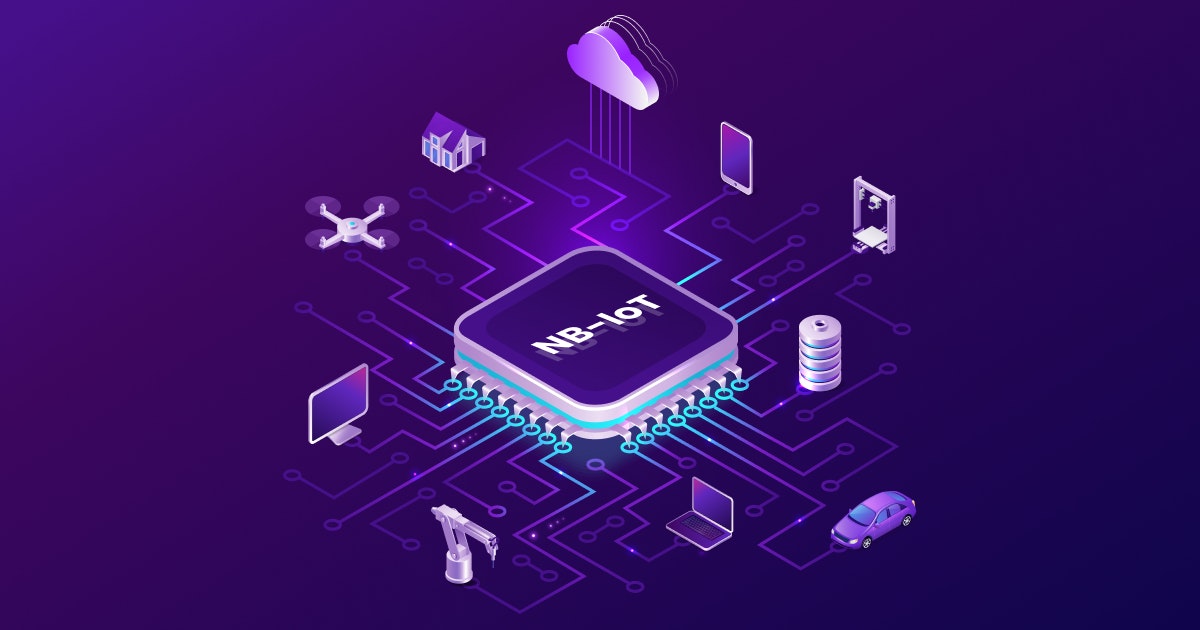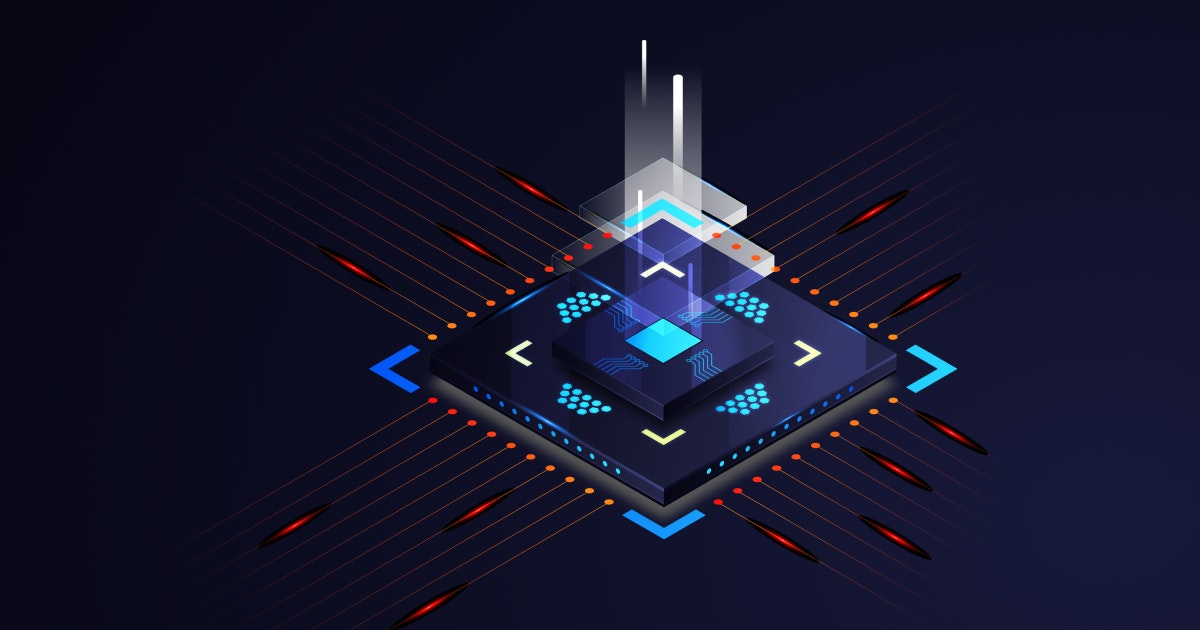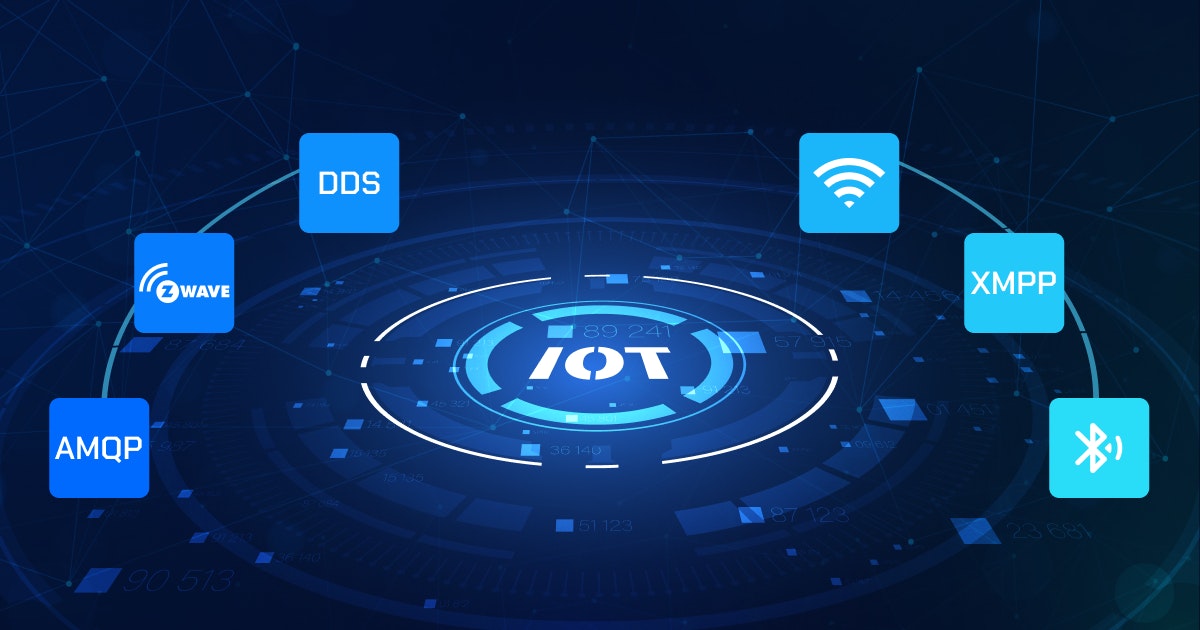Table of Content
Unless you have been living under a rock, you will agree how hyperconnectivity is attempting to elevate IoT apps and push them to a new level. The IoT industry is expanding quickly, so there is a broader scope for innovations. The sky’s the limit.
There is no surprise how the power of IoT has revolutionized the way we handle connected devices and use communication network services. These smart devices are equipped with sensors, gateways, modules, and hardware that utilize networking technologies to link to other systems and devices on a communications network.
A safe and dependable network is necessary to support such a large number of devices. This is where the newly developed Narrowband Internet of Things (NB-IoT) is helpful.
This technology works by utilizing a smaller network bandwidth, which means it can be used in environments where the traditional methods of communication would not properly function. Here is a look at how NB-IoT provides cellular support for small-cell networks:
What is NB-IoT?
As mentioned previously, NB-IoT is actually an acronym for Narrowband Internet of Things, a low-power wide area (LPWA) technology created to enable IoT architecture and connect numerous IoT devices over existing mobile networks.
NB-IoT is a relatively new but rapidly expanding radio technology standard designed exclusively for IoT applications. It is also known as LTE Cat-NB1 and is intended to meet use cases that require transferring just modest amounts of data across large distances.
Simply put, NB-IoT is a low-power narrowband technology that effectively, securely, and reliably transmits small amounts of two-way data. Most contemporary IoT gadgets are reasonably priced, have extended battery lives, and use little energy.
NB-IoT is an extension - let us say, more of an improvement - of the LTE standard for existing mobile communications infrastructure and previously unused NB-IoT frequency bands. The technology has widely been embraced in Europe, North America, and Asia.
How does NB-IoT work?
Due to its potential to support a high number of devices as well as its simpler infrastructure, which enables quicker and easier adoption, NB-IoT appears to be the ideal alternative. In addition, the sensor autonomy is increased by the low energy consumption, and the signal coverage is unmatched compared to other technologies.
It is, therefore, anticipated to drive the rise of IoT connections, particularly in locales where essential factors such as high connection density, long battery life, low costs, and improved interior coverage are to be considered.
Specifications of NB-IoT
As the name implies, Narrowband IoT has been developed to function using either 180 kHz or 200 kHz narrow spectrum bands. The standard also provides for transfers of up to 250 kbit/s.
Narrowband IoT offers latency from 1.6 to 10 seconds, considering that high connection speeds are not necessary for projects requiring NB-IoT. The focus is more on connection reliability instead. As a cellular technology, NB-IoT uses cellular bands for communication and was created to function in three different ways:
NB-IoT is half-duplex, so it effectively supports uplink communication, allowing a connection to the cellular network, the distribution of network resources to the node (also referred to as User Equipment, or UE), and the transfer of data.
When it comes to NB-IoT-enabled devices, the most frequent scenario of device operation entails the following: the device stays disconnected from the network until it has some data to transmit, at which point it connects, sends the data, and then breaks the connection.
After the connection is made, the device keeps it RRC Connected for a set amount of time before it becomes inactive (also known as “RRC Idle”) and ultimately disconnects.
The UE can transmit more data and make more resource requests while in the linked mode (RRC Connected), which essentially mimics how the LTE architecture operates.
Although NB-IoT also permits an instant disconnect after receiving data confirmation, this implies the absence of a downlink window.
The most extensive effort has been made to enable the downlink without a very high power consumption because of its LTE-based structure, where the initial design predicted active connections permanently.
What are the benefits of NB-IoT?
In the field of IoT, 5G is undoubtedly a buzzing term. Before entering the 2020s, no equipment manufacturer would have thought how easy it is to deploy 5G apps. No wonder NB-IoT has gained so much precedence in the last few years. Here are the benefits it brings to the table
1. Power efficiency
Low power consumption is a vital requirement of most IoT applications. It is essential for sensing and monitoring equipment installed in off-the-grid locations.
One cannot change the batteries of these devices frequently, so they need to be equipped with power-efficient batteries. The most crucial factor is the battery charge that will last for a few years, similar to a smartphone.
The power consumption of NB-IoT devices can be shallow, and the battery life can be significantly increased from a few months to several years because this technology concentrates on small data volume packets and modestly-costed applications.
2. Controlled overheads
NB-IoT devices use a simpler waveform and relatively little data to connect, which leads to low energy consumption. Devices are often in a power-saving mode and only use power while sending or receiving data.
Data transfer involves less complexity, minimal buffering, and reduced channel estimation resulting in power savings—longer battery sleep times and limited power consumption help control costs.
3. Higher scalability
The ideal conditions for bandwidth scalability include cheap cost per networked device and decreased complexity. Since the standard is widely used internationally, devices can be networked and operated globally using Narrowband IoT.
4. Wider coverage
Strong indoor NB-IoT coverage, with a 20dB boost over LTE and an increase in a coverage area of 100 times. It can be used for applications such as manufacturing spaces, underground garages, and utility hole covers that need in-depth coverage besides meeting the general coverage requirements of rural areas.
For instance, in the past, the GPRS method for monitoring maintenance hole covers required an antenna to be extended, which made the vehicle more susceptible to damage. If properly implemented, the NB-IoT can resolve this issue.
5. Global reach
While major players in the US have already made billion-dollar investments in LTE networks, many regions worldwide still have less LTE. Larger GSM deployments exist outside of the US, where it is possible to identify new bands to use for NB-IoT. So, the NB-IoT could assist IoT inventors in discovering low-cost entry points into new markets worldwide.
Even in the US, smaller network carriers such as Boost Mobile or T-Mobile may use NB-IoT on their existing GSM spectrum to increase connectivity without making the same LTE investment as Verizon or AT&T. In fact, Sprint and T-Mobile recently partnered up to create advanced 5G technologies to serve their customers better.
6. Greater security and reliability
Narrowband IoT is a licensed cellular standard with all the security and privacy characteristics found in cellular networks, unlike other LPWA networks like LoRaWAN. NB-IoT puts a lot of emphasis on data security, privacy, and secure authentication. Additionally, the provider can ensure adequate transmission quality using NB-IoT.
IoT Protocols: Making IoT Data Communication Seamless
Learn MoreIs NB-IoT focused on energy efficiency?
Yes, NB-IoT is more concerned with conserving energy. The success of your IoT project depends on its energy efficiency. That makes NB-IoT a perfect technology match! The overall cost of your project rises if you use many IoT devices with batteries.
It consumes more energy as these batteries may wear out quickly. Replacing batteries across the hardware for that project will be a manual task and may even be expensive.
Therefore, if the equipment has a longer battery life, the ROI and overall value of the business case will be higher. Additionally, low-power consumption opens up various application cases that could possibly use countless devices.
The theoretical battery life of NB-IoT is ten years or even slightly longer. The number of settings for your IoT application will determine the actual battery life, including using energy-saving options such as eDRX and Power Saving Mode (PSM).
The use of NB-IoT capabilities in your project will provide energy savings and cost benefits. Battery manufacturers claim to offer up to 10 years of battery life. That is why your project must be examined for settings and features that could save power at all times.
You can improve the system's power efficiency by minimizing usage - wherever unnecessary. These techniques will help extend battery life and reduce power consumption.
What is the latency rate of Narrowband IoT?
In situations where extremely low network latency is required, NB-IoT is less suitable. As a result, deploying it in applications that might need data as close to real-time is not advisable. LTE-M is the better option for such IoT networks.
In the transition to 5G, NB-IoT plays a part in enabling use cases that need speed and are frequently crucial. Not all of this depends on the communication standard that is selected. In most cases, latency is 10 seconds or less. It may vary in a range of 1.6 to 10 seconds.
Applications of NB-IoT you should know
With billions of devices expected to come online in the near future, we need wireless networks that can support them. And if you have read until now, you will agree that NB-IoT is an exciting solution.
In fact, telecommunication giants such as Ericsson, Qualcomm, Vodafone, and Huawei are working together on this standard in conjunction with 3GPP. Let us take a look at how Narrowband IoT apps operate in different verticals:
1. Smart cities
The notion of a typical city is changing as more and more people migrate to urban areas. A UN research states that more than 68% of the global population will reside in cities by 2050. That is not far away. As of today, we have 35 megacities in the world.
IoT networks help monitor and control different aspects of cities. The entire project is complex, and the technology adopted must also demonstrate economic viability.
Fortunately, narrowband IoT does just that. Since NB-IoT modems are inexpensive, they can be used widely in wide-area settings.
The applications for NB-IoT are endless - ranging from smart waste collection to smart parking and automated street lighting. Other uses include traffic and weather monitoring and connected emergency services.
2. Smart healthcare
The concept of connected personal appliances that measure health metrics can become a reality with NB-IoT technology. It is helpful for the elderly and patients with critical illnesses who need continuous monitoring of their health parameters.
Both patients and caretakers can benefit significantly from these devices, primarily through wearables. NB-IoT is the most dependable and practical choice for continuous patient monitoring.
It enables tracking variables such as blood pressure and heart rate. These parameters can be remotely measured and evaluated regularly by the doctors.
3. Smart GPS tracking
GPS trackers to prevent crimes and accidents can also leverage NB-IoT technologies. NB-IoT now plays a significant role in improving the performance of GPS trackers deployed in human tracking systems.
It offers an efficient, safe, and affordable manner to track people that may be in a vulnerable position - such as children in crowded areas or patients who might need immediate assistance in case of distress.
NB-IoT provides a wide range and low power consumption advantages for IoT solutions - making them affordable and efficient.
4. Fleet management
Sensor-based smart parking lots are growing in popularity all over the world. NB-IoT provides a more practical option that fits parking management with a centralized system. Smart sensors identify vacant slots and notify users with dedicated apps that are updated in real-time. As soon as the parking lot is completely full, the sensor signals the control database to update the data immediately. This is useful for traffic management while saving time and fuel costs for users.
5. Smart retail
NB-IoT also optimizes numerous retail industry sectors, including supply chain management and logistics. The technology can make it simple to track organizational assets as long as the tracking is non-continuous. Smart shelves enable connected retail by employing NB-IoT as their underlying technology.
Since NB-IoT can connect a wide range of devices, including barcode scanners, cameras, and EPOS machines, it can assist retail establishments in improving the in-store experience for their customers. The additional benefit is that it offers longer battery life while using less power.
6. Manufacturing
Equipment monitoring and automation in production are made possible by NB-IoT. Sensors powered by narrowband technology can help with passive monitoring of specific processes to ensure higher productivity.
It can also be deployed to monitor factory assets, enabling predictive maintenance. One can use the data collected by NB-IoT sensors to identify potential failures and minimize downtime.
However, the usage of NB-IoT devices is limited to equipment installed in a fixed location. It facilitates two-way communication, allowing the upgrade of firmware and software.
One can use data collected by the sensors for decision-making and increasing efficiency by helping factories and warehouses integrate operations and equipment efficiently.
7. Building management
Here is a scenario: A building is not just a structure with a roof and walls standing permanently in one place. But it is smart and interactive - giving its occupants a much more holistic living experience. Hard to imagine? Not anymore!
The term “smart building” refers to the network and automation of structures such as office complexes, shopping malls, and hospitals. A building is equipped with various sensors that provide information about humidity, temperature, pressure, pollution levels, and others.
NB-IoT reduces operational costs and optimizes functionality so that the establishment’s environment is more efficient and favorable to those using it. That means everything can be controlled from a central hub at any point, from heating and doors to lifts and blinds.
Moreover, NB-IoT utilizes mobile radio technology because of its excellent penetration rate, which makes it an ideal choice regarding building management.
Over to you
Unquestionably, NB-IoT is a cutting-edge networking technology with many benefits. It works well when creating connections between gadgets, such as meters, sensors, and static assets in a fixed area. As a vital technical enabler that provides wireless communication in a licensed spectrum to devices, NB-IoT has advanced significantly.
As the range of applications expands from static to mobile sensors with latency limits, NB-IoT devices will transform wireless network capacity and capitalize on the demand for coverage. If you are keen to develop an NB-IoT app for your business and enjoy the various benefits it brings to the table, why not have a chat with the experts at Intuz?
We have worked on many IoT projects across industry verticals and possess the right experience and knowledge to launch future-ready and client-facing IoT products. Get started here today with IoT app development!






